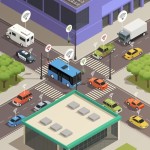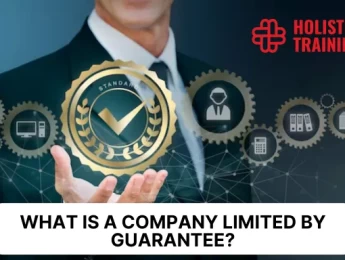- Table of Contents
- Introduction
- What is Green Supply Chain Management?
- Why is Green Supply Chain Management Important?
- 1. Enhanced Marketability and Brand Value
- 2. Cost Reduction and Operational Efficiency
- 3. Regulatory Compliance and Risk Mitigation
- 4. Enhanced Customer Loyalty and Competitive Advantage
- 5. Long-Term Financial Benefits and Value Creation
- 6. Contribution to Global Sustainability Goals
- 7. Employee Engagement and Talent Attraction
- Key Principles and Practices of Green Supply Chain Management
- 1. Green Product Design
- 2. Sustainable Sourcing
- 3. Energy-Efficient Operations
- 4. Recycling and Waste Reduction
- 5. Optimising Transportation
- 6. Regulatory Compliance
- 7. Collaboration and Transparency
- 8. Life Cycle Management
- Steps to Achieve Green Supply Chain Management
- 1. Assess Your Supply Chain
- 2. Set Environmental Objectives
- 3. Select and Collaborate with Sustainable Suppliers
- 4. Optimise Transportation and Logistics
- 5. Implement Green Practices Across Operations
- 6. Monitor, Measure, and Report on Performance
- 7. Continuously Improve and Adapt
- Trends in Green Supply Chain Management
- 1. Integration of Circular Economy Principles
- 2. Adoption of Advanced Technologies
- 3. Increased Emphasis on Supply Chain Transparency
- 4. Growing Focus on Carbon Footprint Reduction
- 5. Focus on Sustainable Packaging
- 6. Increased Collaboration and Partnerships
- 7. Embracing Sustainable Finance and Investment
- Conclusion
Introduction
As environmental concerns become increasingly pressing, Green Supply Chain Management (GSCM) has emerged as a vital strategy for businesses aiming to reduce their ecological footprint. This approach integrates environmental considerations into every phase of the supply chain—from design to disposal—helping companies minimise waste, optimise resource use, and enhance sustainability. As consumer expectations and regulatory pressures grow, understanding and implementing GSCM principles and practices is crucial for businesses seeking to operate responsibly and stay competitive. This blog post delves into the key principles, practices, and emerging trends in GSCM, providing insights into how companies can build more sustainable supply chains.
What is Green Supply Chain Management?
Green Supply Chain Management refers to incorporating environmental considerations into every aspect of the supply chain, from the design and sourcing of products to their disposal. It is a holistic approach that minimises the environmental impact of supply chain activities while enhancing operational efficiency and business profitability.
At its core, GSCM seeks to align supply chain operations with environmental sustainability goals. This involves rethinking traditional practices and integrating eco-friendly strategies into the entire supply chain, including product design, procurement, manufacturing, transportation, and end-of-life disposal. The ultimate objective is to create a supply chain that is not only economically efficient but also environmentally responsible
Aspect | Green Supply Chain Management | Traditional Supply Chain Management |
Environmental Focus | Emphasises reducing ecological impact | Often prioritises cost and efficiency |
Resource Use | Promotes sustainable resource utilisation | May focus on maximising resource use |
Waste Management | Includes recycling and waste reduction | Waste management may be less emphasised |
Energy Efficiency | Targets reduced energy consumption | Energy use optimisation may be limited |
Supplier Selection | Priorities eco-friendly suppliers | Supplier selection may be cost-driven |
Why is Green Supply Chain Management Important?
Green Supply Chain Management (GSCM) is not merely a trend but a strategic approach with significant implications for businesses, society, and the environment. Its importance extends across several dimensions, offering immediate and long-term advantages. Here’s a closer look at why GSCM is crucial:
1. Enhanced Marketability and Brand Value
In an era of rising environmental consciousness, consumers increasingly prioritise sustainability. In fact, today’s consumers increasingly prioritise companies that adopt green practices, with Boston Consulting Group revealing that 70 per cent are willing to pay a 5 per cent premium for sustainable products. Moreover, the US Small Business Association, according to Agility, notes that four out of five consumers actively choose environmentally friendly products and services. Companies that adopt green supply chain practices can leverage this trend to differentiate themselves in a competitive market. By demonstrating a commitment to environmental responsibility, businesses can enhance their brand image and appeal to eco-conscious customers. This not only helps attract new customers but also retains existing ones who value sustainability. Moreover, a strong environmental profile can create opportunities for premium pricing and market expansion.
2. Cost Reduction and Operational Efficiency
Green supply chain practices often lead to significant cost savings through various channels:
- Energy Efficiency: Implementing energy-efficient technologies and processes can reduce energy consumption and lower utility bills. For instance, upgrading to energy-efficient machinery or optimising production processes can lead to substantial savings over time.
- Waste Reduction: Minimising waste through better materials management and recycling can cut disposal costs and reduce the need for raw materials. Companies that focus on waste reduction often find that they can reuse or repurpose materials, further lowering costs.
- Transportation Optimization: Efficient transportation practices, such as route optimization and the use of fuel-efficient vehicles, can reduce fuel consumption and logistics expenses. This not only cuts costs but also minimises the carbon footprint of transportation activities.
By focusing on these areas, companies can achieve a leaner, more cost-effective operation while simultaneously contributing to environmental sustainability.
3. Regulatory Compliance and Risk Mitigation
As governments and regulatory bodies around the world introduce stricter environmental regulations, compliance becomes increasingly important. Companies that adopt green supply chain practices are better positioned to meet these regulatory requirements, reducing the risk of fines, penalties, and legal challenges. Moreover, proactive engagement with environmental standards can help companies anticipate and adapt to future regulatory changes, thus avoiding potential disruptions.
In addition to regulatory compliance, GSCM helps mitigate risks associated with environmental issues. For example, companies that implement sustainable practices are less likely to face supply chain disruptions due to environmental incidents, such as natural disasters or resource shortages. By reducing their environmental impact, companies can also protect themselves from reputational risks and negative publicity associated with unsustainable practices.
4. Enhanced Customer Loyalty and Competitive Advantage
Customers are increasingly aware of the environmental impact of their purchasing decisions. Companies that prioritise sustainability can build stronger relationships with their customers by aligning with their values and preferences. This can lead to increased customer loyalty and advocacy, as well as a competitive edge in the marketplace.
Furthermore, businesses that implement green supply chain practices often find themselves better equipped to respond to market trends and demands. This agility can provide a significant competitive advantage, allowing companies to capitalise on emerging opportunities and adapt to changing market conditions.
5. Long-Term Financial Benefits and Value Creation
While the initial investment in green supply chain practices may seem substantial, the long-term financial benefits often outweigh the costs. Companies that invest in sustainability typically experience lower operational costs, increased efficiency, and higher profitability over time. Additionally, sustainable practices can create value for stakeholders, including shareholders, employees, and customers.
For example, companies that focus on green product design and sustainable sourcing can create innovative products that meet evolving consumer demands. This can lead to new revenue streams and market opportunities. Similarly, companies that embrace circular economy principles and life cycle management can enhance their resource efficiency and reduce costs, contributing to long-term financial stability.
6. Contribution to Global Sustainability Goals
Adopting green supply chain practices contributes to broader global sustainability goals, such as reducing greenhouse gas emissions, conserving natural resources, and promoting environmental stewardship. By aligning their operations with these goals, companies play a critical role in addressing global environmental challenges, such as climate change and resource depletion.
Participating in global sustainability efforts not only enhances a company’s reputation but also demonstrates a commitment to corporate social responsibility. This can lead to positive relationships with stakeholders, including governments, NGOs, and the community.
7. Employee Engagement and Talent Attraction
A commitment to sustainability can also enhance employee engagement and attract top talent. Employees, especially those from younger generations, increasingly seek to work for companies that share their values and demonstrate a commitment to environmental responsibility. By adopting green supply chain practices, companies can foster a positive workplace culture, improve employee satisfaction, and attract skilled professionals who are passionate about sustainability.
In summary, Green Supply Chain Management is essential not only for meeting regulatory requirements and enhancing operational efficiency but also for building a strong brand, reducing costs, and contributing to global sustainability goals. Its importance spans multiple facets of business performance, offering both immediate and long-term benefits. By integrating green practices into their supply chains, companies can position themselves as leaders in sustainability and drive positive change across their operations and beyond.
Key Principles and Practices of Green Supply Chain Management
Green Supply Chain Management (GSCM) integrates environmental considerations into every phase of the supply chain, from initial product design through to disposal. This approach aims to minimise environmental impacts while enhancing operational efficiency and overall business performance. To effectively implement GSCM, companies must adhere to several key principles and practices that collectively contribute to a sustainable supply chain.
1. Green Product Design
Green product design involves creating products with environmental considerations embedded into their conception and development. This practice aims to reduce the ecological footprint of products throughout their lifecycle. Key aspects of green product design include:
- Material Selection: Choosing eco-friendly materials that are renewable, biodegradable, or recycled. This reduces reliance on non-renewable resources and minimises waste.
- Energy Efficiency: Designing products to be energy-efficient during use. For instance, energy-efficient appliances or vehicles reduce the consumption of energy resources and lower greenhouse gas emissions.
- Design for Disassembly: Ensuring products are easy to disassemble at the end of their life cycle. This facilitates the recycling and reuse of components and materials.
- Durability: Enhancing product durability to extend its lifecycle and reduce the frequency of replacements, thus minimising waste and resource consumption.
By integrating these considerations into the design process, companies can create products that are not only environmentally friendly but also align with consumer demand for sustainable solutions.
2. Sustainable Sourcing
Sustainable sourcing involves selecting suppliers and materials that adhere to environmental and social standards. This practice ensures that the sourcing of raw materials and components minimises negative environmental impacts and promotes ethical practices. Key elements include:
- Supplier Evaluation: Assessing suppliers based on their environmental performance, such as their use of renewable resources, waste management practices, and energy efficiency.
- Ethical Practices: Ensuring that suppliers adhere to fair labour practices and human rights standards and provide safe working conditions.
- Certification and Standards: Choosing suppliers who comply with recognized environmental certifications and standards, such as ISO 14001 (Environmental Management) or the Forest Stewardship Council (FSC) certification for sustainable forestry.
- Local Sourcing: Where feasible, sourcing materials locally reduces transportation emissions and supports local economies.
Sustainable sourcing helps reduce the environmental footprint and enhances the overall resilience and ethical standing of the supply chain.
3. Energy-Efficient Operations
Energy-efficient operations focus on reducing energy consumption and improving the efficiency of production processes. This practice involves:
- Energy Audits: Conducting regular energy audits to identify areas where energy usage can be reduced.
- Technology Upgrades: Invest in energy-efficient technologies, such as LED lighting, energy-efficient HVAC systems, and advanced manufacturing equipment.
- Process Optimisation: Streamlining production processes to minimise energy waste. For example, adopting lean manufacturing techniques can reduce energy consumption and improve efficiency.
- Renewable Energy: Incorporating renewable energy sources, such as solar or wind power, into operations to reduce reliance on fossil fuels.
Companies can lower operational costs, reduce their carbon footprint, and contribute to broader climate goals by improving energy efficiency.
4. Recycling and Waste Reduction
Waste reduction and recycling are critical practices in minimising the environmental impact of supply chain operations. This involves:
- Waste Audits: Identifying sources of waste and implementing strategies to reduce waste generation.
- Recycling Programs: Establishing comprehensive recycling programs for materials such as paper, plastics, metals, and electronics.
- Material Efficiency: Improving material usage in production processes to reduce waste. Techniques such as just-in-time inventory and precision manufacturing can help minimise excess materials.
- Product Take-Back Programs: Implementing programs that allow customers to return used products for recycling or proper disposal, thus closing the loop in the product life cycle.
Effective waste management helps reduce environmental impact and creates opportunities for cost savings through resource recovery and recycling.
5. Optimising Transportation
The EPA reports that transportation was responsible for 28.2 per cent of greenhouse gas emissions in 2018, making it the largest contributor among all sources. This is where transportation optimisation comes into play. It aims to enhance logistics efficiency and reduce transportation activities' environmental impact. Key practices include:
- Route Optimisation: Using advanced software and analytics to determine the most efficient transportation routes, thereby reducing fuel consumption and emissions.
- Fleet Management: Investing in fuel-efficient or alternative fuel vehicles and implementing regular maintenance to ensure optimal performance.
- Consolidation: Combining shipments to reduce the number of trips and overall transportation emissions. This can be achieved through better coordination and delivery planning.
- Modal Shift : Exploring alternative transportation modes, such as rail or sea, maybe more environmentally friendly than road transport.
Optimising transportation processes can significantly reduce carbon emissions and operational costs, creating a more sustainable supply chain.
6. Regulatory Compliance
Regulatory compliance involves adhering to environmental laws and regulations that govern supply chain activities. This includes:
- Staying Informed: Keeping up-to-date with local, national, and international environmental regulations and standards.
- Implementing Compliance Programs: Establishing programs and procedures to ensure adherence to environmental regulations, such as waste disposal regulations, emissions limits, and chemical handling guidelines.
- Regular Audits and Reporting: Conducting regular environmental audits to assess compliance and reporting on environmental performance to relevant authorities.
Compliance not only helps avoid legal issues and fines but also demonstrates a company’s commitment to environmental stewardship.
7. Collaboration and Transparency
Collaboration and transparency are essential for fostering a sustainable supply chain. This involves:
- Engaging Stakeholders: Collaborating with suppliers, customers, and industry partners to share information, best practices, and resources related to sustainability.
- Supply Chain Transparency: Providing clear and accurate information about environmental practices, product sourcing, and supply chain operations. This can enhance trust and accountability among stakeholders.
- Joint Initiatives: Participating in industry-wide sustainability initiatives and certifications that promote collective progress toward greener supply chains.
Building strong relationships and fostering transparency within the supply chain can drive more effective and widespread adoption of sustainable practices.
8. Life Cycle Management
Life cycle management involves evaluating and managing the environmental impact of a product throughout its entire lifecycle. Key aspects include:
- Life Cycle Assessment (LCA): Conducting assessments to evaluate the environmental impact of a product from raw material extraction to disposal. This helps identify areas for improvement and guide decision-making.
- Design for Environment (DfE): Incorporating environmental considerations into product design to minimise impact throughout the product’s lifecycle.
- End-of-Life Management: Planning for the disposal, recycling, or reuse of products at the end of their lifecycle. This includes designing products for easier disassembly and recycling.
Effective life cycle management helps reduce the overall environmental impact of products and supports sustainable consumption and production practices.
By adhering to these principles and practices, companies can implement Green Supply Chain Management effectively, resulting in a more sustainable, efficient, and responsible supply chain. These practices not only contribute to environmental protection but also offer significant business benefits, including cost savings, enhanced brand value, and improved stakeholder relationships.
Steps to Achieve Green Supply Chain Management
Achieving Green Supply Chain Management (GSCM) involves strategic steps designed to integrate environmental considerations throughout the supply chain. These steps help companies transition to more sustainable practices and ensure that every aspect of the supply chain aligns with environmental goals. Here’s a detailed look at each step:
1. Assess Your Supply Chain
The first step in achieving GSCM is to conduct a comprehensive assessment and mapping of your supply chain. This involves identifying all suppliers, logistics providers, and other partners involved in the production and delivery of your products. By mapping the supply chain, you can pinpoint areas with the greatest environmental impact, such as energy consumption, waste generation, and resource use. This detailed analysis provides a baseline for understanding where improvements can be made and helps prioritise actions based on their potential environmental benefits.
2. Set Environmental Objectives
Setting clear environmental objectives is crucial for guiding the implementation of green practices. These objectives should align with your overall sustainability goals and be specific, measurable, achievable, relevant, and time-bound (SMART). For example, you might aim to reduce carbon emissions by a certain percentage within a specific timeframe or achieve zero waste to landfill by a set date. Establishing these targets creates a roadmap for your green supply chain initiatives and provides a framework for measuring progress and success.
3. Select and Collaborate with Sustainable Suppliers
Choosing suppliers who adhere to sustainable practices is a critical step in achieving GSCM. Evaluate potential suppliers based on their environmental performance, such as their use of renewable resources, waste management practices, and compliance with environmental regulations. Collaboration with these suppliers should extend beyond just selecting them; it involves working closely to align their practices with your sustainability goals. Regular communication and joint efforts in areas like product design, resource efficiency, and waste reduction can enhance the overall sustainability of the supply chain.
4. Optimise Transportation and Logistics
Optimising transportation and logistics is essential for reducing the environmental impact of your supply chain. This involves implementing strategies to improve transportation efficiency, such as route optimization to minimise fuel consumption and emissions and adopting fuel-efficient or alternative fuel vehicles. Additionally, consolidating shipments and exploring alternative modes of transportation, such as rail or sea, can further reduce environmental impact. Efficient logistics not only helps in lowering carbon emissions but also reduces operational costs and improves overall supply chain performance.
5. Implement Green Practices Across Operations
Integrating green practices across all operations is vital for achieving a sustainable supply chain. This includes adopting energy-efficient technologies and processes, reducing waste through recycling and reuse programs, and ensuring compliance with environmental regulations. To create a cohesive approach, involve all departments in the sustainability efforts, from procurement to production and distribution. Training employees on green practices and encouraging a culture of sustainability can further enhance the effectiveness of these initiatives.
6. Monitor, Measure, and Report on Performance
Ongoing monitoring and measurement of environmental performance are essential for tracking progress and identifying areas for improvement. Implement performance metrics and key performance indicators (KPIs) related to your environmental objectives, such as energy consumption, waste reduction, and carbon emissions. Regularly review these metrics to assess the effectiveness of your green practices and make necessary adjustments. Transparent reporting on environmental performance not only demonstrates your commitment to sustainability but also helps build trust with stakeholders and provides valuable insights for continuous improvement.
KPI | Meaning |
Carbon Emissions Reduction | Measures the decrease in CO2 emissions |
Energy Consumption Efficiency | Evaluates energy use improvements |
Waste Reduction Rate | Tracks the amount of waste reduced |
Percentage of Recycled Materials | Percentage of materials recycled |
Water Usage Reduction | Measures reduction in water consumption |
Table: KPIs for environmental objectives
7. Continuously Improve and Adapt
Green Supply Chain Management is an ongoing process that requires continuous improvement and adaptation. Regularly review and update your environmental objectives and practices based on new sustainability developments, regulations changes, and stakeholder feedback. Embrace innovation and seek out new technologies and practices that can further enhance the sustainability of your supply chain. By fostering a culture of continuous improvement, you can stay ahead of emerging trends and maintain a leading position in environmental stewardship.
By following these steps, companies can effectively implement Green Supply Chain Management, resulting in a more sustainable and efficient supply chain. Each step contributes to reducing environmental impacts, enhancing operational performance, and achieving long-term sustainability goals.
Trends in Green Supply Chain Management
As the focus on sustainability intensifies, several emerging trends in Green Supply Chain Management (GSCM) are shaping the future of how companies manage their supply chains. These trends reflect technological advancements, evolving consumer expectations, and a growing emphasis on corporate responsibility. Understanding these trends helps businesses stay competitive and align with best sustainability practices.
1. Integration of Circular Economy Principles
The circular economy represents a significant shift from the traditional linear take-make-dispose model to a more sustainable approach where resources are continuously reused, repaired, and recycled. Companies are increasingly adopting circular economy principles to minimise waste and extend the lifecycle of products. This involves designing products for longevity, facilitating product take-back programs, and developing closed-loop systems where materials are recovered and reused. By embracing these principles, businesses can reduce their environmental footprint, lower costs associated with raw materials, and create new revenue streams from recycled materials.
2. Adoption of Advanced Technologies
Advanced technologies are playing a crucial role in enhancing the efficiency and sustainability of supply chains. Innovations such as Internet of Things (IoT), blockchain, and artificial intelligence (AI) are being increasingly integrated into GSCM:
- IoT: IoT devices provide real-time monitoring of environmental conditions, energy usage, and supply chain processes. This enables companies to track and manage their environmental impact more effectively and make data-driven decisions to optimise operations.
- Blockchain: Blockchain technology enhances transparency and traceability within the supply chain. It allows for secure and verifiable tracking of products and materials from source to end-user, ensuring compliance with sustainability standards and reducing the risk of greenwashing.
- AI: AI and machine learning algorithms help in optimising supply chain processes by predicting demand, improving inventory management, and identifying opportunities for energy and resource efficiency.
These technologies not only improve operational efficiency but also support more informed decision-making and enhanced accountability in sustainability efforts.
3. Increased Emphasis on Supply Chain Transparency
Consumers and stakeholders are demanding greater transparency regarding companies' environmental and ethical practices. Businesses are responding by providing more detailed information about their supply chains, including sourcing practices, environmental impacts, and labour conditions. Enhanced transparency helps build customer trust, supports informed purchasing decisions, and demonstrates a commitment to ethical and sustainable practices. Companies are also engaging in third-party audits and certifications to validate their claims and ensure accountability.
4. Growing Focus on Carbon Footprint Reduction
Reducing carbon emissions has become a top priority for companies aiming to combat climate change. Businesses are implementing comprehensive carbon footprint reduction strategies that include:
- Carbon Offsetting: Investing in carbon offset projects, such as reforestation or renewable energy initiatives, to compensate for emissions that cannot be eliminated.
- Renewable Energy: Transitioning to renewable energy sources, such as solar or wind power, to reduce reliance on fossil fuels and lower overall carbon emissions.
- Energy Efficiency: Adopting energy-efficient technologies and practices across operations to minimise energy consumption and associated emissions.
By actively managing and reducing their carbon footprint, companies not only contribute to global climate goals but also improve their environmental performance and operational efficiency.
5. Focus on Sustainable Packaging
Sustainable packaging is becoming a critical aspect of green supply chain management. Companies are exploring various approaches to reduce the environmental impact of packaging, including:
- Eco-Friendly Materials: Using recyclable, biodegradable, or compostable materials to minimise waste and environmental impact.
- Minimalist Packaging: Designing packaging that uses fewer materials and reduces overall packaging waste.
- Reusable Packaging: Implementing systems for reusable packaging to reduce the need for single-use containers and lower the overall waste generated.
Sustainable packaging practices not only align with consumer preferences for environmentally friendly products but also contribute to waste reduction and resource conservation.
6. Increased Collaboration and Partnerships
Collaboration between companies, suppliers, and industry stakeholders is essential for advancing green supply chain practices. Businesses are forming partnerships and participating in industry initiatives to address common sustainability challenges and share best practices. Collaborative efforts include:
- Industry Alliances: Joining industry groups and alliances focused on sustainability to drive collective action and develop industry-wide standards and guidelines.
- Supplier Engagement: Working closely with suppliers to implement sustainable practices, improve environmental performance, and support mutual sustainability goals.
- Public-Private Partnerships: Engaging in partnerships with government agencies, NGOs, and other organisations to address broader environmental and social issues.
By fostering collaboration, companies can leverage shared resources, knowledge, and expertise to enhance the effectiveness of their green supply chain initiatives.
7. Embracing Sustainable Finance and Investment
Sustainable finance and investment are gaining prominence as companies seek to align their financial strategies with environmental and social goals. This trend includes:
- Green Bonds: Issuing green bonds to raise capital for environmentally friendly projects and initiatives.
- Sustainable Investing: Investing in projects and companies demonstrating strong environmental, social, and governance (ESG) performance.
- Impact Metrics: Developing metrics and reporting frameworks to measure and communicate investments' environmental and social impact.
Sustainable finance supports the development and scaling of green initiatives and helps companies attract investment from stakeholders who prioritise sustainability.
By staying informed about these trends, companies can enhance their Green Supply Chain Management practices, meet evolving consumer and regulatory demands, and contribute to a more sustainable future. Embracing these trends not only aligns with best sustainability practices but also positions companies as leaders in the transition to a greener economy.
Conclusion
Green Supply Chain Management is not just a trend but a critical approach for businesses aiming to operate sustainably in today’s environmentally conscious market. By implementing green practices across product design, sourcing, operations, and logistics, companies can significantly reduce their environmental impact while also achieving operational efficiencies and cost savings. Embracing trends such as circular economy principles, advanced technologies, and sustainable packaging further enhances the effectiveness of GSCM efforts.
As companies navigate the complexities of sustainability, continuous improvement and adaptation are key. Businesses that integrate these practices not only contribute to environmental protection but also position themselves competitively by meeting consumer demands for transparency and responsibility. The ongoing evolution in green supply chain management presents both challenges and opportunities, offering a path toward more sustainable and resilient supply chains.
For those looking to deepen their understanding and application of these principles, our course "Creating a Sustainable & Valuable Supply Chain" provides comprehensive insights and practical strategies to elevate your green supply chain efforts. Enrol now to gain the knowledge and tools needed to drive sustainability and add value to your supply chain.

























